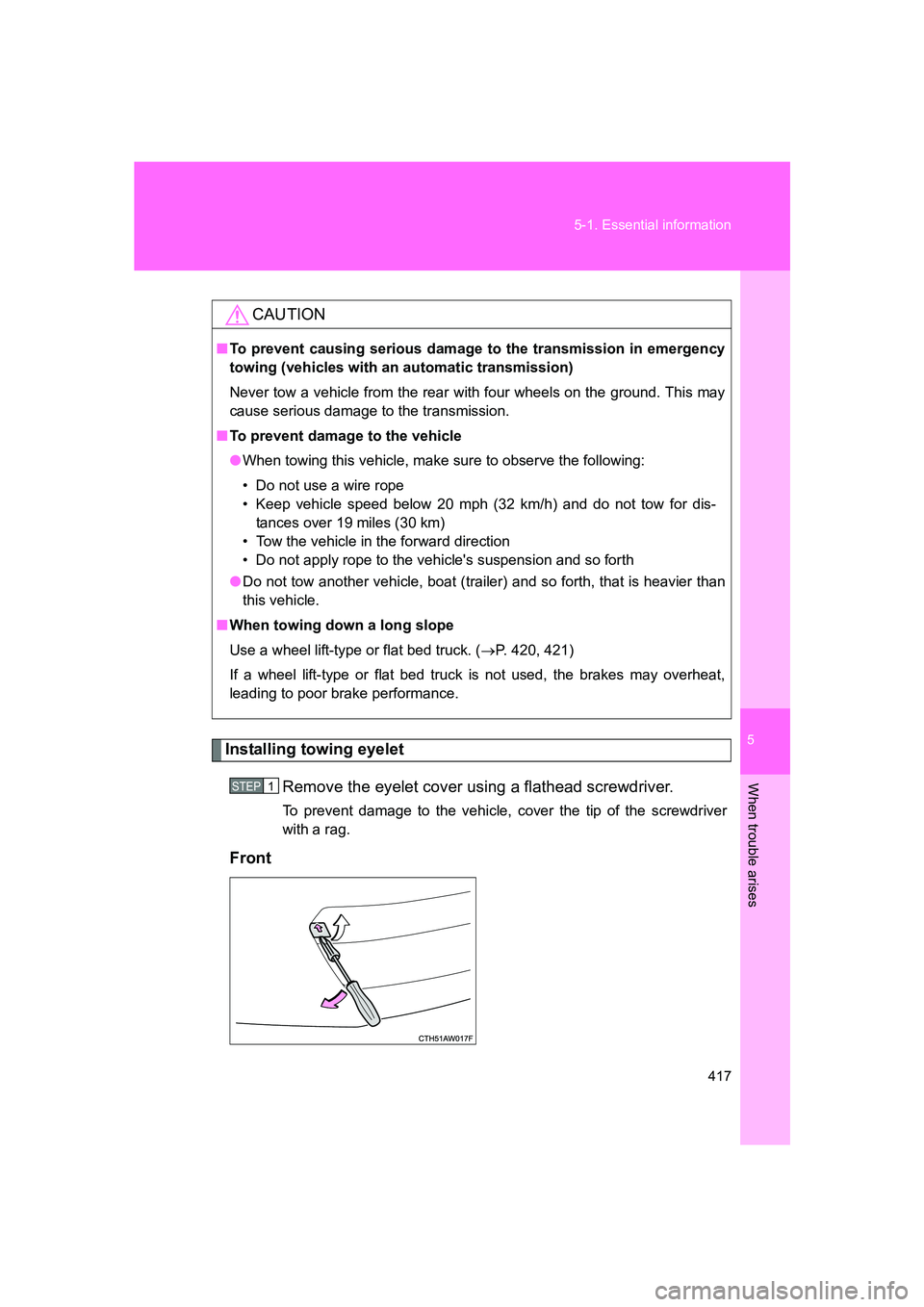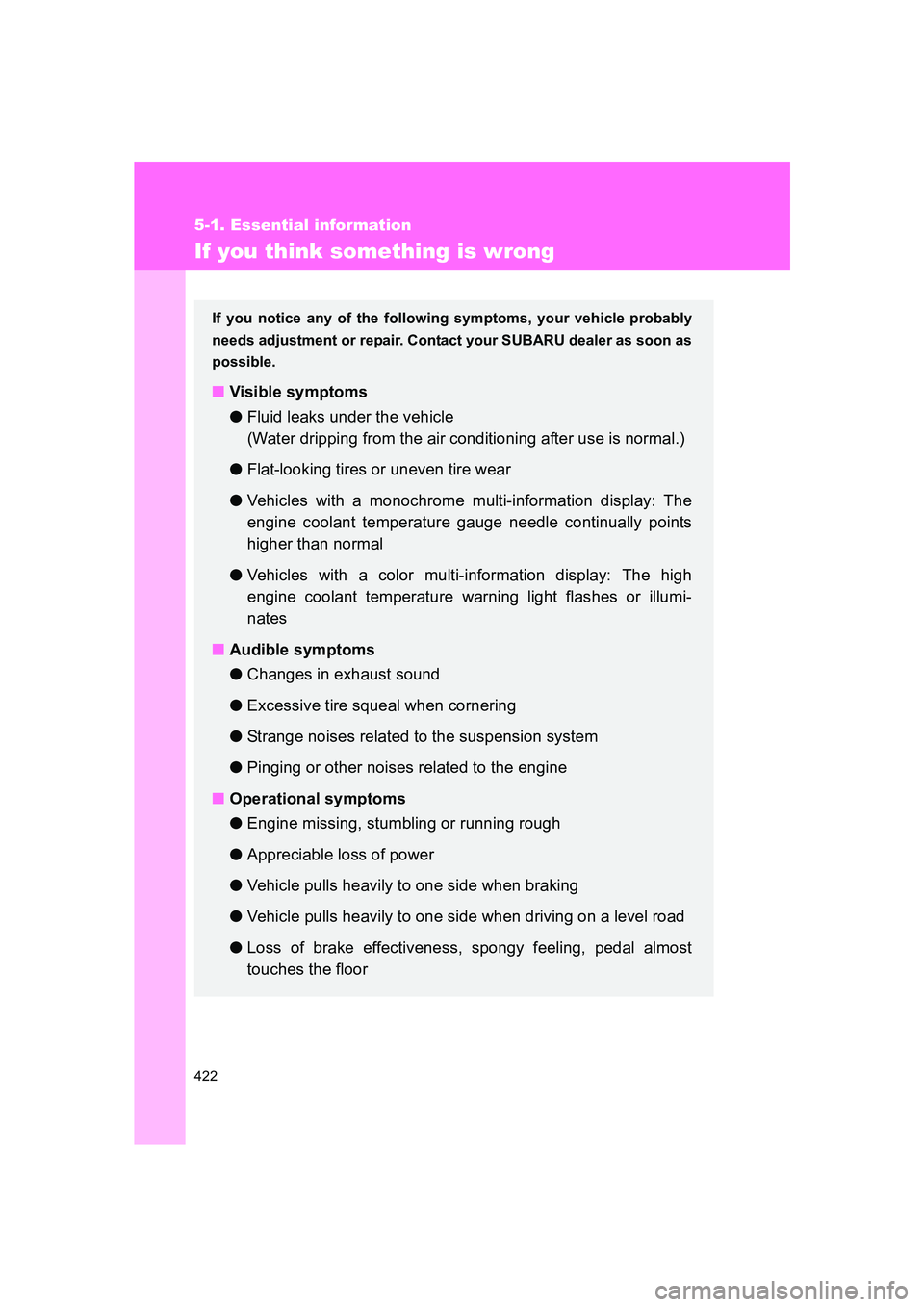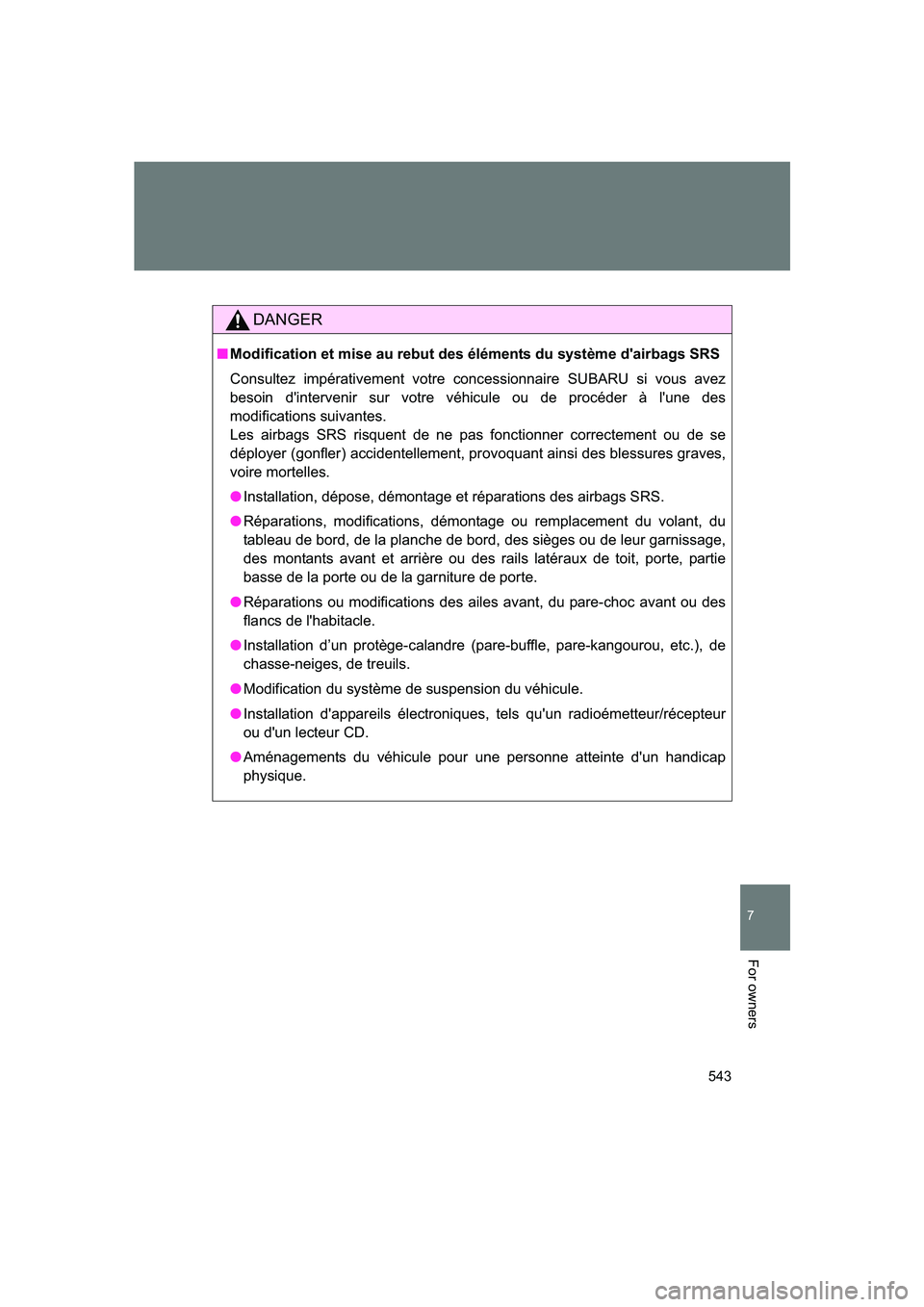Page 415 of 560

5
When trouble arises
415
5-1. Essential information
BRZ_U
If your vehicle needs to be towed
Emergency towingIf a tow truck is not available in an emergency, your vehicle may be
temporarily towed using a cable or chain secured to the emergency
towing eyelet to move the vehicle to a safe location or to free a stuck
vehicle from sand or snow. This should only be attempted on hard
surfaced roads for short distances at low speeds.
A driver must be in the vehicle to steer and operate the brakes. The
vehicle's wheels, drive train, axles, steering and brakes must be in
good condition.
For vehicles with an automatic transmission, only the front towing
eyelet may be used. Towing eyelet
If towing is necessary, we recommend having your vehicle towed by
your SUBARU dealer or a comme rcial towing service, using a flat
bed truck.
The vehicle must be secured properly with safety chains. Each
safety chain should be equally tightened and care must be taken not
to pull the chains so tightly that the suspension bottoms out.
Page 417 of 560

5
When trouble arises
417
5-1. Essential information
BRZ_U
Installing towing eyelet
Remove the eyelet cover using a flathead screwdriver.
To prevent damage to the vehicle, cover the tip of the screwdriver
with a rag.
Front
CAUTION
■To prevent causing serious damage to the transmission in emergency
towing (vehicles with an automatic transmission)
Never tow a vehicle from the rear with four wheels on the ground. This may
cause serious damage to the transmission.
■ To prevent damage to the vehicle
● When towing this vehicle, make sure to observe the following:
• Do not use a wire rope
• Keep vehicle speed below 20 mph (32 km/h) and do not tow for dis-
tances over 19 miles (30 km)
• Tow the vehicle in the forward direction
• Do not apply rope to the vehicle's suspension and so forth
● Do not tow another vehicle, boat (trailer) and so forth, that is heavier than
this vehicle.
■ When towing down a long slope
Use a wheel lift-type or flat bed truck. ( →P. 420, 421)
If a wheel lift-type or flat bed truck is not used, the brakes may overheat,
leading to poor brake performance.
STEP 1
Page 422 of 560

422
5-1. Essential information
BRZ_U
If you think something is wrong
If you notice any of the following symptoms, your vehicle probably
needs adjustment or repair. Contact your SUBARU dealer as soon as
possible.
■Visible symptoms
● Fluid leaks under the vehicle
(Water dripping from the air conditioning after use is normal.)
● Flat-looking tires or uneven tire wear
● Vehicles with a monochrome multi-information display: The
engine coolant temperature gauge needle continually points
higher than normal
● Vehicles with a color multi-information display: The high
engine coolant temperature warning light flashes or illumi-
nates
■ Audible symptoms
● Changes in exhaust sound
● Excessive tire squeal when cornering
● Strange noises related to the suspension system
● Pinging or other noises related to the engine
■ Operational symptoms
● Engine missing, stumbling or running rough
● Appreciable loss of power
● Vehicle pulls heavily to one side when braking
● Vehicle pulls heavily to one side when driving on a level road
● Loss of brake effectiveness, spongy feeling, pedal almost
touches the floor
Page 543 of 560

543
7
BRZ_U
For owners
DANGER
■Modification et mise au rebut des éléments du système d'airbags SRS
Consultez impérativement votre concessionnaire SUBARU si vous avez
besoin d'intervenir sur votre véhicule ou de procéder à l'une des
modifications suivantes.
Les airbags SRS risquent de ne pas fonctionner correctement ou de se
déployer (gonfler) accidentellement, provoquant ainsi des blessures graves,
voire mortelles.
● Installation, dépose, démontage et réparations des airbags SRS.
● Réparations, modifications, démontage ou remplacement du volant, du
tableau de bord, de la planche de bord, des sièges ou de leur garnissage,
des montants avant et arrière ou des rails latéraux de toit, porte, partie
basse de la porte ou de la garniture de porte.
● Réparations ou modifications des ailes avant, du pare-choc avant ou des
flancs de l'habitacle.
● Installation d’un protège-calandre (pare-buffle, pare-kangourou, etc.), de
chasse-neiges, de treuils.
● Modification du système de suspension du véhicule.
● Installation d'appareils électroniques, tels qu'un radioémetteur/récepteur
ou d'un lecteur CD.
● Aménagements du véhicule pour une personne atteinte d'un handicap
physique.